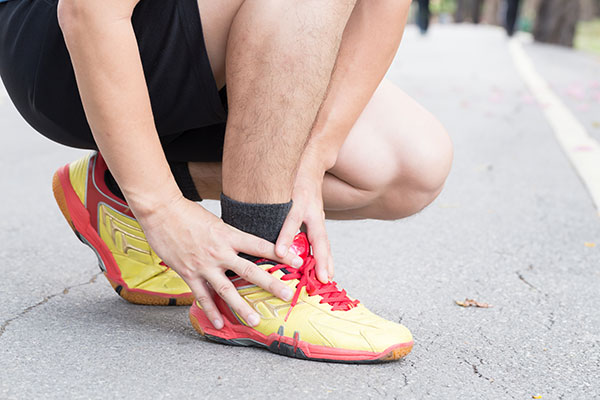
It is becoming increasingly apparent, in the last five years or so, that non-operative management of Achilles tendon injuries, in comparison to the traditional methods of Achilles tendon surgical repair is appropriate. The information that has become available, largely from the United Kingdom and Scandinavia have indicated that bracing and physiotherapeutic management of Achilles tendon injuries is just as successful as surgical treatment of the Achilles tendon. This, of course, does not refer to the new treatment that we advocate by way of direct route surgical repair of the tendon into the bone using the internal bracing technique. The older technique simply allows reapposition of the tendon and the use of sutures to tie the tendon ends together. As may be expected, the strength of this repair is extremely low as the tendon itself is often degenerate and of poor quality. Thus, the information that has come to light over the last five years or so, recommending non-operative management of these injuries is a direct indication that the surgical repair technique is not adequate.
This information was initially put forward by Professor Niek van Dyke from Amsterdam and has entered the literature. It has caused an alteration in the treatment patterns of acute Achilles tendon injuries in many areas especially in the United Kingdom and Scandinavia. It has not yet come to Australia where many surgeons continue to manage these injuries with old-fashioned direct repair surgery.
The information that has yet to appear in the literature relates to internal bracing which we enthusiastically recommend. We do not perform the older style technique of simple Achilles tendon repair. It has, for many years, appeared to us an inadequate method of reconstruction as the strength of the repair is substandard, to say the least.
Therefore, the information that has yet to come to the literature by way of internal bracing is likely to change the management of these injuries in the long term.
The technique involves the use of sutures, usually by a minimally invasive technique to securely internally fix the proximal end of the Achilles tendon, that is the ruptured end. The sutures are then passed in a subcutaneous fashion and directly implanted into the heel bone, the calcaneus. This allows direct repair of the Achilles tendon to bone. It allows a particularly strong and durable reconstruction allowing immediate weight bearing. Thus, the patient can rehabilitate more quickly, allowing a diminished reduction in strength of the Achilles tendon complex. We have many patients beginning to run by the eight-week mark. Clearly, this is not possible with the older techniques.
Thus, Achilles tendon repair in an old-fashioned way is no longer appropriate. The results are the same whether surgical reconstruction is undertaken or not and with this in mind, placing patients at risk of any type of surgical procedure and internal bracing is sure to change the outcome in this type of repair in the longer term. We are at the forefront of this treatment which was originally espoused by Dr Gordon McKay from Scotland about five years ago.

Write a comment:
You must be logged in to post a comment.